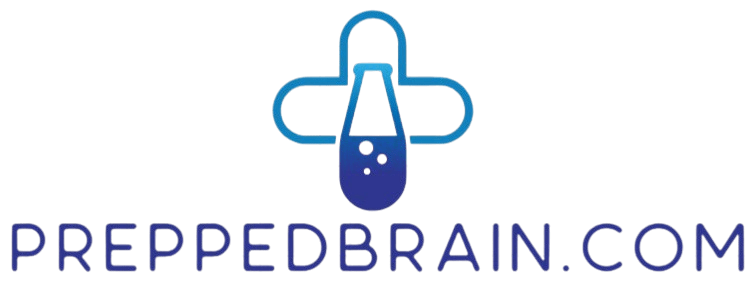5 study techniques for effective problem solving
In today s fast-paced world, honing effective problem-solving skills is crucial for your success, whether in academics or the workplace. This article presents five study techniques tailored to enhance your ability to tackle challenges with clarity and creativity.
From mastering active reading to utilizing mind mapping, collaborating with peers, and understanding the importance of breaks, each method provides distinct advantages. Explore these strategies to discover how they can transform your approach to problem-solving and make your learning experience more engaging and effective.
Contents
Key Takeaways:

Active reading helps increase understanding and retention of information, improving problem-solving skills. Additionally, 5 study techniques to improve memory retention such as mind mapping allow for better organization and visualization of information, aiding in problem-solving. Practicing similar problems reinforces your knowledge and prepares you for new challenges.
1. Practice Active Reading
Active reading is a fundamental study technique that immerses you in the text. It enhances your comprehension and retention, leading to better learning outcomes. This method is about more than just skimming through pages; it requires focusing on understanding, questioning, and summarizing the material.
By adopting this approach, you can significantly reduce your study time while maximizing effectiveness. Research shows that actively engaging with the material is crucial for retaining complex information, especially in detail-oriented subjects like AP Biology.
To elevate your learning, try incorporating strategies such as annotating texts. Highlight key concepts and jot down your thoughts for deeper insights into the material.
Summarizing chapters helps you summarize the main ideas and assess your understanding. Asking questions as you read fosters critical thinking and encourages reflection on the material’s implications.
It’s vital to tailor these techniques to your learning preferences. If you’re a visual learner, using mind maps might resonate with you, while auditory learners could find discussions more beneficial. Additionally, considering 5 study techniques to prepare for standardized tests can enhance your study approach.
By integrating these practices into a study habit tracker, you can evaluate their effectiveness. This enables continuous improvement and fosters a more meaningful engagement with the content.
2. Use Mind Mapping to Organize Information
Mind mapping is an exceptional visualization tool that gives you the power to organize information. It makes even the most complex subjects more manageable and enhances your study effectiveness. By visually connecting ideas, you can easily break down problems, identify key variables, and generate solutions.
This technique shines in subjects like AP Biology, where grasping intricate concepts such as cellular processes is essential. To create impactful mind maps, try using exciting tools like MindMeister or XMind, which facilitate collaboration and editing.
Begin with a central theme and branch out into related topics like genetics, evolution, and physiology. This method makes it easier to understand the relationships between various concepts.
As you visualize your notes, you clarify your thoughts and enhance your problem-solving skills. This allows you to tackle exams and assignments with newfound confidence.
3. Practice Similar Problems
Practicing similar problems is a highly effective study technique that reinforces your knowledge and sharpens your problem-solving abilities. For additional strategies, consider exploring 5 study techniques for improving test scores, especially in subjects that demand critical thinking, such as mathematics and AP Biology.
Practicing similar problems can build your confidence and enhance your ability to tackle new challenges. Additionally, utilizing past exam papers offers invaluable insights into the types of questions you might encounter.
Online resources, including interactive quizzes and educational videos, can enrich your understanding and present diverse approaches to problem-solving. Spaced practice, or reviewing material at gradually increasing intervals, helps solidify concepts in your memory.
As you engage with the material repeatedly over time, rather than cramming, you cultivate a deeper understanding that ultimately benefits your academic performance. Start using these techniques today to transform your study habits!
4. Collaborate with Peers

Collaborating with your peers is essential for effective studying. It significantly enhances your learning outcomes through shared knowledge and diverse perspectives.
By discussing concepts, brainstorming solutions, and offering feedback, you deepen your understanding and sharpen your problem-solving skills.
Engaging in group study establishes a robust support system and fosters critical thinking as you challenge each other’s viewpoints and assumptions.
Use techniques like Fishbone Analysis, which helps you explore root causes by visually mapping out problems. SWOT Analysis, which stands for Strengths, Weaknesses, Opportunities, and Threats, helps you assess various scenarios.
These structured approaches promote a comprehensive understanding, enabling you to evaluate complex issues from multiple angles. Actively participating in these methodologies cultivates an environment rich in collaboration, preparing you for real-world challenges.
5. Take Breaks and Rest
Taking breaks and allowing yourself time to rest are often underestimated aspects of effective studying. They can significantly enhance your concentration and decision-making skills.
Steering clear of prolonged study sessions gives your mind the chance to recharge. This can lead to sharper problem-solving abilities and improved overall academic performance.
Research shows that brief pauses enhance cognitive functions by reducing mental fatigue. This makes it easier for you to absorb and retain information effectively.
Techniques like the Pomodoro Technique encourage focused study intervals followed by short breaks, optimizing your learning and promoting sustained attention.
Once you complete your study sessions, evaluate your results for thoughtful assessment. This helps you pinpoint your strengths and weaknesses.
This cycle of concentrated effort, restorative breaks, and self-evaluation creates a balanced approach to studying. It fosters long-term retention and enhances your adaptability in learning.
How Can These Techniques Improve Problem Solving Skills?
Implementing various study techniques like active reading, mind mapping, and collaboration can significantly enhance your problem-solving skills. For optimal results, consider exploring 5 study techniques for math success, as these techniques provide you with essential tools to assess situations and develop effective solutions.
Research shows that a structured approach to studying bolsters comprehension and can be enhanced by using 5 study techniques for success in competitive exams. It also nurtures critical thinking and creativity in crafting solutions.
By actively engaging with the material through techniques such as active reading, you can better pinpoint key variables related to a problem. This is crucial for achieving a well-rounded understanding.
Mind mapping acts as a visual aid that organizes your thoughts while fostering connections between concepts. This makes it easier to brainstorm potential solutions in a clear and structured way.
Collaborative approaches invite discussion and diverse perspectives, enriching the problem-solving process even further.
Strengthening these skills translates to improved educational outcomes, giving you the power to apply your problem-solving abilities across a wide range of subjects, from mathematics to social sciences.
What Are the Benefits of Active Reading?
Active reading presents a wealth of benefits. It enhances your comprehension, retention, and overall learning outcomes by engaging you with the material in a meaningful way.
By employing research-backed techniques such as summarization, questioning, and visual aids, you can transform passive studying into an active process. For those specifically focused on language acquisition, exploring 5 study techniques for language learning can result in knowledge that sticks.
For example, you might adopt summarization techniques by jotting down key points after each section of a textbook. This solidifies your understanding and retention.
Questioning involves crafting a list of inquiries about the material. This encourages deeper examination and critical thinking.
If you are a visual learner, incorporating diagrams or mind maps can help you represent information visually. This makes it much easier to grasp complex concepts.
By utilizing these diverse strategies, you can tailor your study habits to align with your unique learning style. Ultimately, this leads to a more effective and enjoyable educational experience.
How Can Mind Mapping Help with Problem Solving?

Mind mapping is a great way to improve your problem-solving skills. It allows you to break down complex issues and see how ideas connect.
This organized method helps you focus on key points and brainstorm solutions effectively. Start by defining the main issue and branching out into related topics.
For example, in AP Biology, you can start with ‘Cellular Respiration.’ Then, create branches for glycolysis, the Krebs cycle, and the electron transport chain.
This visual tool enhances understanding and helps you remember information. It’s useful in subjects from literature to physics.
Why Is Practice Important for Problem Solving?
Practicing problem-solving is essential for developing skills to face challenges. This is especially true in subjects that require a sharp ability to identify problems and find solutions, such as those covered in 5 study techniques for science students.
Self-quizzing and research-backed techniques help you grasp concepts and apply them in various contexts over time. Exploring different practice methods can greatly improve your retention of knowledge.
By revisiting challenging material periodically, you reinforce your understanding and boost confidence. When real-world challenges arise, your preparation will show.
This ongoing practice solidifies your theoretical knowledge and builds critical thinking skills. These qualities are crucial in today’s fast-paced world.
What Are the Advantages of Collaborating with Peers?
Working with your peers brings many benefits. You gain from diverse perspectives, shared knowledge, and constructive feedback, which all enhance problem-solving skills.
This interactive approach encourages active engagement and deeper understanding of complex topics, especially in tough subjects like AP Biology. Collaborating also improves your communication skills as you express your ideas and consider others’ viewpoints.
For example, in group projects focused on experimental design in biology, you explore different hypotheses and methods together.
These activities help you practice negotiation and conflict resolution, important skills in both school and life. Brainstorming sessions on case studies allow you to learn from others, leading to creative solutions.
In the end, these collaborative efforts greatly enrich your learning experience.
How Do Rest and Breaks Improve Problem Solving?
Rest and regular breaks are key to boosting your problem-solving skills. They sharpen your focus and help you make better decisions.
When you let your brain recharge, you avoid burnout and think more clearly about tough challenges. Research shows that even brief pauses can significantly boost your thinking skills.
For example, studies suggest that stepping away can enhance your creativity. Your mind works on problems even when you’re not actively thinking about them.
To take full advantage of these benefits, try techniques like the Pomodoro Technique:
- Work for 25 minutes,
- Then take a 5-minute break.
During breaks, light physical activity or a moment of mindfulness can improve your mental clarity. This leads to better problem-solving when you dive back into your tasks.
Frequently Asked Questions

What are the 5 study techniques for effective problem solving?
The five techniques are:
- Breaking down the problem
- Brainstorming solutions
- Seeking help from others
- Practicing with similar problems
- Reflecting on the process
How does breaking down the problem help?
Breaking it into smaller parts makes it easier to understand and identify potential solutions.
Why is brainstorming important?
It encourages creativity and allows different approaches to solving the issue. This process generates new ideas and perspectives.
When should I ask for help?
Seek help when you’re stuck or need a fresh perspective. Working with others can make problem-solving faster and more effective.
How does practice improve my skills?
Practicing similar problems builds confidence and familiarity. You can apply 5 study techniques to tackle difficult subjects to find what works best for you.
Why reflect on the process?
Reflection helps you evaluate your approach and identify areas for improvement. It reinforces the successful strategies you used.





